Why Was the Theory Chosen?
- Nursing practice is influenced by various factors;
- Nurses shift between care and administrative demands;
- Ray (1989) addressed issues in her theory;
- Proposed a bureaucratic caring structure;
- Bureaucratization of caring is a new structure;
- Healthcare as business vs. healthcare as need;
- Theory allows combining the oppositions.
Nursing practice is influenced by different factors: political, economic, legal, educational, technological, etc. (Turkel, 2007). Nurses are expected to care for patients and consider all the bureaucratic demands. The theory chosen for this presentation addresses the issue: Ray (1989) proposes a bureaucratic caring structure that consists of seven factors: ethical, spiritual, economic, technological/psychological, legal, political, educational/social. It is a new structure that can address the problems nurses have to face due to challenges of organizational culture. Business vs. need are combined in this theory.
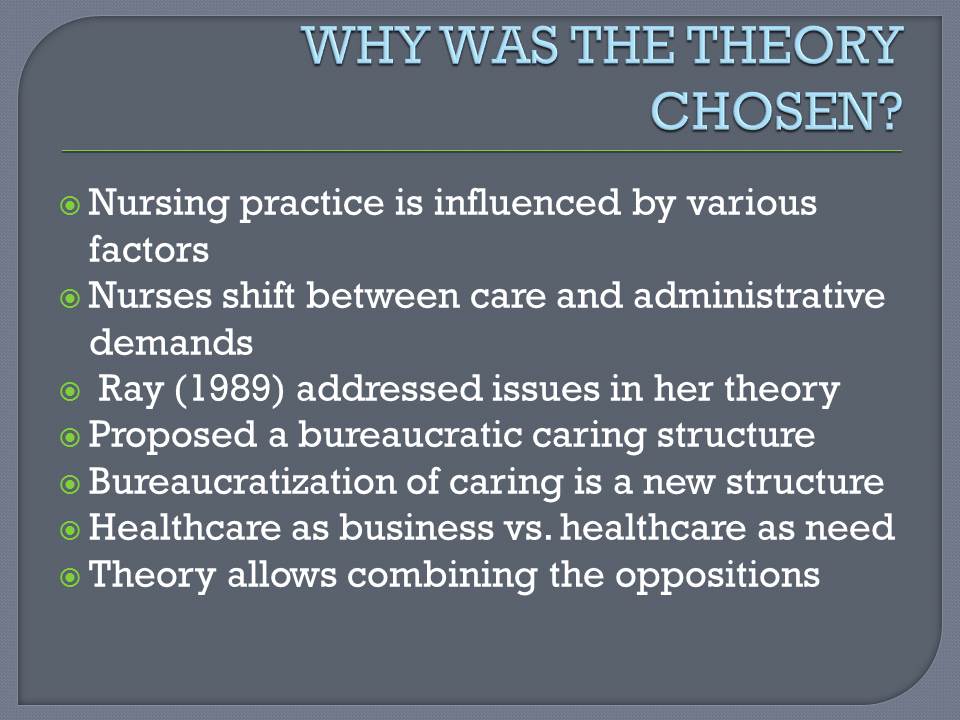
Appropriateness
- Ray (1989) showed contrasting demands for care;
- Nursing and caring affected by economic/political dimensions;
- Nurses form interactions depending on dominant areas;
- Humanistic dimensions remain unaddressed;
- Workforce shortage interferes with holistic care;
- Administrative demands limit nursing practice;
- Spiritual-ethical caring is the core of nursing.
Ray (1989) points out the different demands for care that APNs have to face today: the major areas (political and economic) dominate over the other ones (educational, social, ethical, etc.). Since nurses have to focus on these dimensions, their interactions also change and cannot take spiritual care into consideration. According to Ray (1989), humanistic dimensions are rarely addressed, although patients need this type of care. Workforce shortage forces nurses to provide more services that are administered by economic dimension. Nurses cannot provide spiritual-ethical care because their services are limited by budget, insurance systems, as well as political factors.
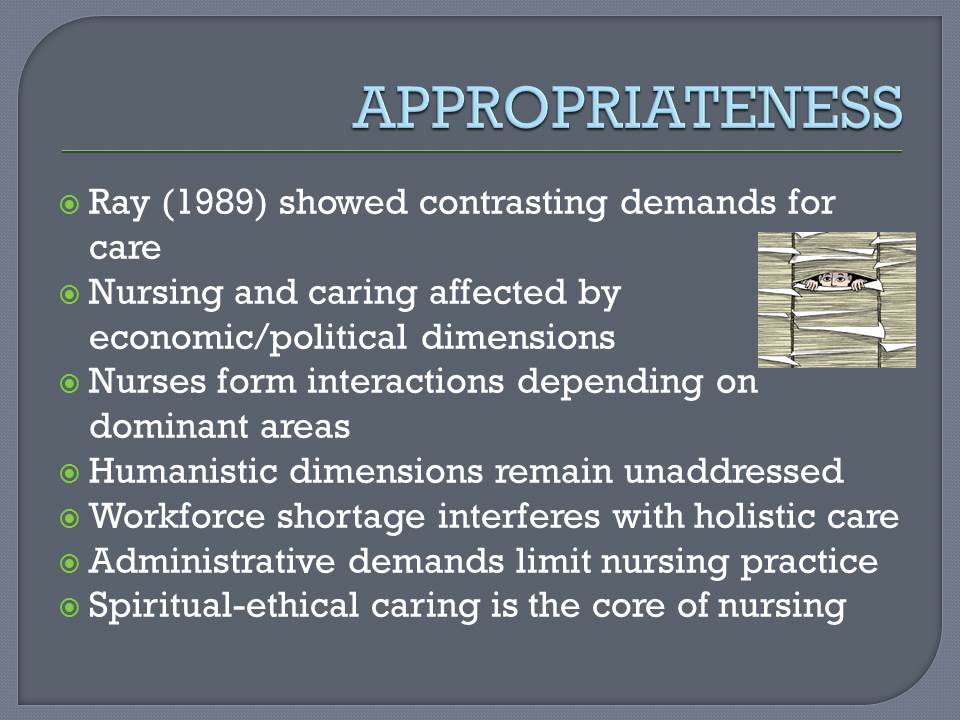
Key Points: Part One. Concepts
- Major concepts: caring, educational concept, physical, etc;
- Caring categories differ in clinical units;
- Synthesis between caring and antithesis of caring;
- Theory unifies caring and antithesis of caring;
- Caring is both differential and bureaucratic;
- Effective for administrative and clinical practices;
- Consists of two major components.
The major concepts of the theory are these: caring, spiritual-ethical caring, educational, physical, social-cultural, legal, technological, economic, and political (Turkel, 2007). Caring categories differ in different units: in oncology, compassion and family care are essential, while physicians focus on the technical side of care, although also admit the importance of ethical care (Ray, 1989). Caring is humanistic, social, educational, etc., while the antithesis of caring is economic, political, legal, etc. (elements of bureaucracy) (Ray, 1989). Two major components are caring and bureaucracy. The theory is more effective for administrative/clinical practices since it addresses legal and political demands as well.
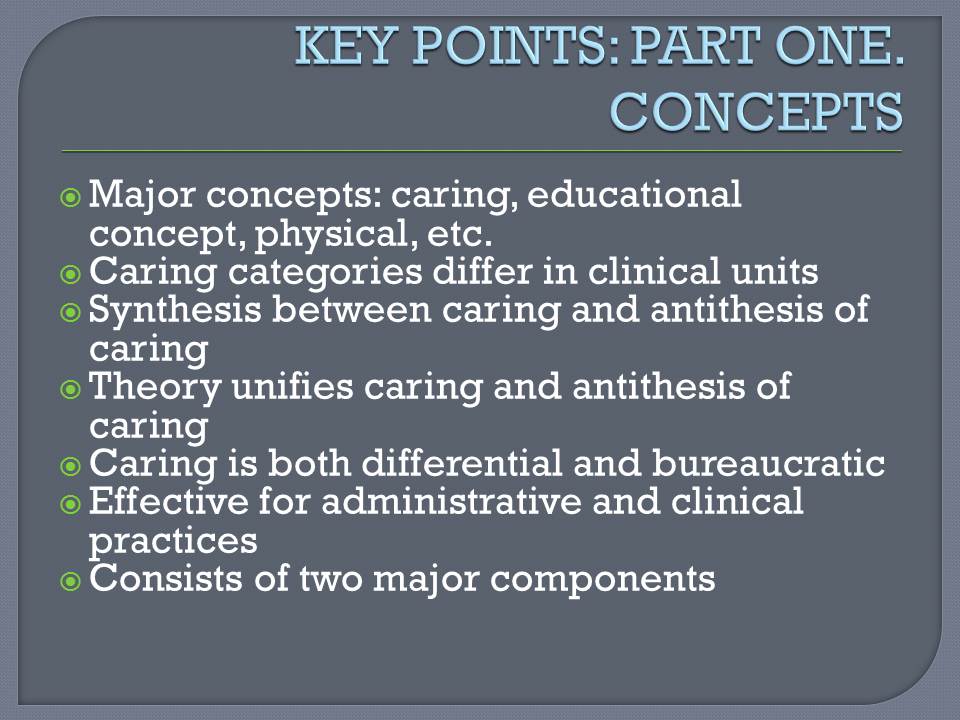
Key Components: Part Two. Assumptions
- Political: division of labor, negotiations, competition.
- Economic: money, budget, insurance.
- Legal: rules, informed consent, malpractice, accountability.
- Technological/physiological: machinery, knowledge, skills.
- Educational: information, teaching, information.
- Social: communication, interrelationships, compassion, concern, empathy.
- Spiritual: prayer, acts of faith, “brotherly love”.
Political factors include decision-making, union activities, how power and prestige are used, what resources are used to sustain an organization. Economic factors are the allocation of recourses, money, budget, maintenance of economic viability (Zaccagnini & White, 2015). Legal factors in caring are responsibility, consent, clients’ rights, professional rights, privacy, and issues of malpractice. Technological factors focus on machinery and its use to sustain well-being, knowledge, and skills necessary to operate machinery. Educational factors relate to information, teaching, use of media to provide and teach information (Ray, 1989). Social factors include communication, interaction, and support, as well as compassion. Spiritual factors are acts of faith.
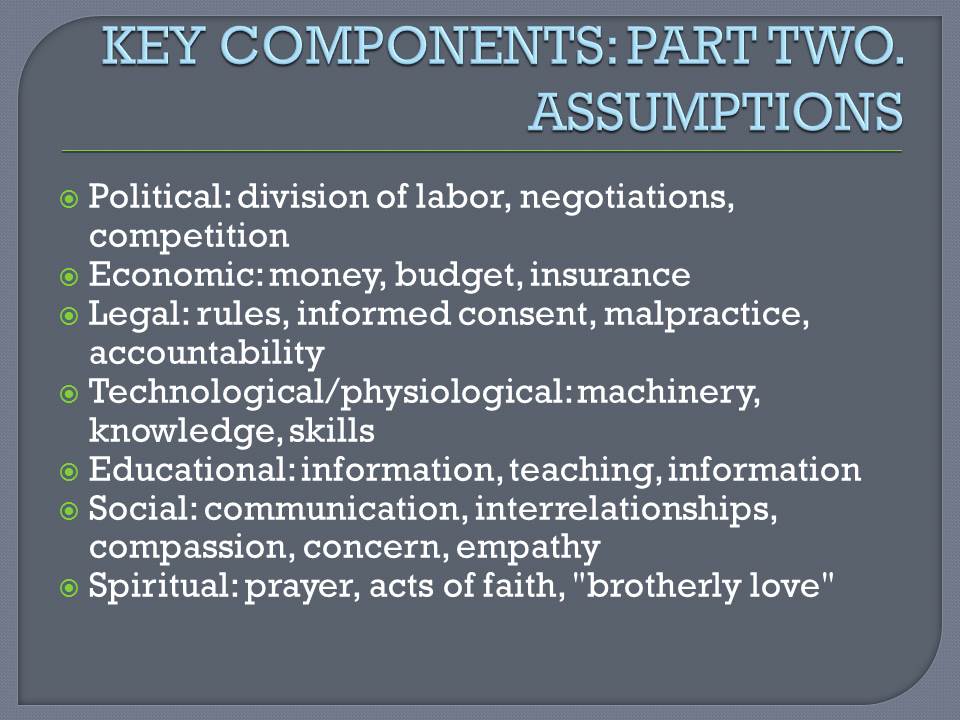
Key Components: Part Three. Meta-Paradigms
- Four major assumptions created by Ray (1989);
- Nursing: relational, spiritual, ethical caring;
- Person: spiritual and cultural beings;
- Health: concept that depends on different factors;
- Environment: spiritual, ethical, ecological, cultural phenomenon;
- All paradigms are interdependent;
- Nurse-patient relationships are outcome and process.
Nursing is holistic, relational, spiritual, ethical caring that functions with communities and bureaucratic cultures (Turkel, 2007). Understanding of healing emerges in nursing together with love and compassion. A person is both spiritual and cultural being that engages in different transcultural relationships (Ray, 2016). Health is a concept that is constructed by people who use their culture and patterns to differ between well-being and illness. The healthcare system determines the criteria of sickness and health, the way it is presented to professionals and interpreted by the individual. The environment is a phenomenon that addresses patterns of meaning and symbolic representations (Zaccagnin & White, 2015). They change through values and historical events.
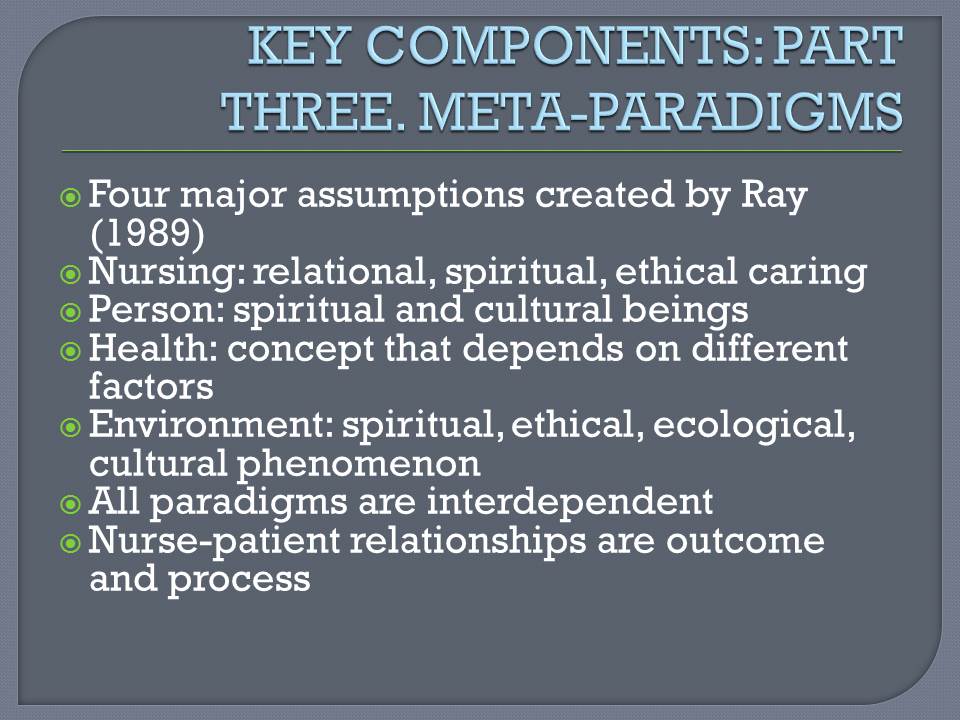
Interesting Facts: Theories That Relate to Ray’s Theory
- Substantive theory: one affects the other;
- Substantive theory: basic social process;
- Formal theory: deductive + inductive methods;
- Formal theory: substantive + cumulative knowledge;
- Ray’s theory emerged from the two theories;
- Ray’s theory understands caring as a whole;
- Three theories deeply research social processes.
According to substantive theory, evidence of the impact of one factor on the other is crucial for the understanding of social processes (Parker, 2005). Formal theory is based on substantive knowledge and “cumulative knowledge from the social world” (Parker, 2005, p. 365). It engages deductive and inductive methods to research social processes. A substantive theory of differential caring focused on the action of caring in institutional culture, which was used for Ray’s theory (1989). The formal theory emerged from connecting the opposites. Ray’s theory was built on its basis.
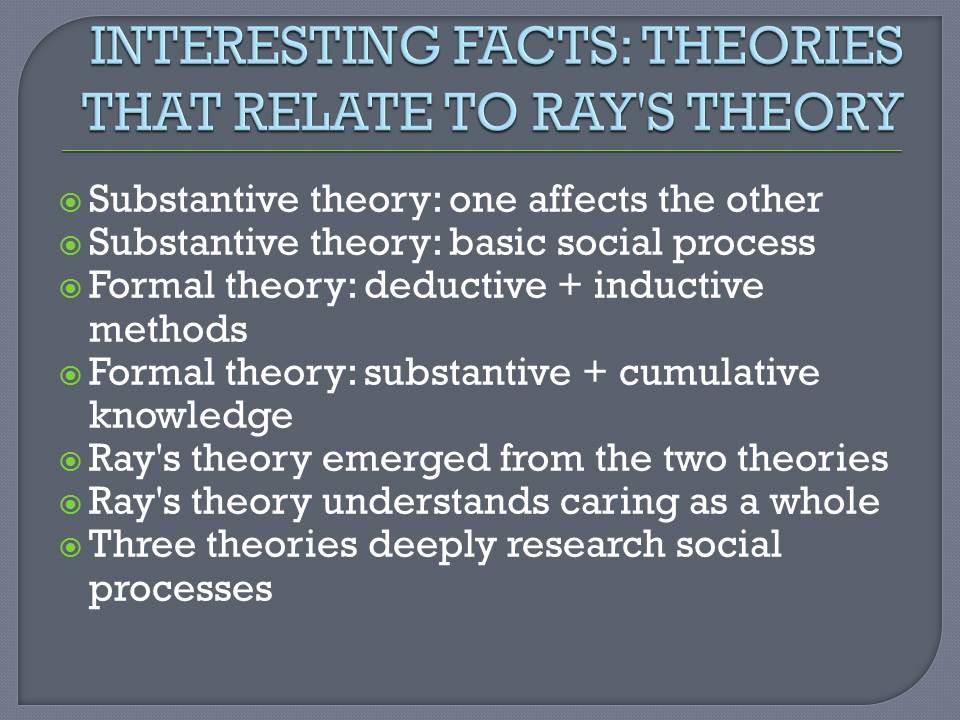
Theory Critique
- Clarity: the concepts used have semantic consistency;
- Simplicity: the number of concepts is minimal (Alligood, 2014);
- Generality: applies to nursing as a whole;
- Accessibility: improves understanding of health care organizations;
- Importance: stresses the need for reflexive ethics;
- Ability to be applied: administrative/clinical practice;
- Acceptance: used in education, practice, administration, etc.
Ray (1989) clearly defines the major concepts and their interdependence in her theory. They are consistent with definitions nurses commonly use (Alligood, 2014). Although the bureaucratic system is complex, Ray (1989) uses only several concepts to describe it, which makes the theory comprehensible. It sees nursing as caring and provides nurses with a unique view of nursing as a whole and as a part of the system. Nurses use it to understand the dynamics of healthcare organizations. It stresses the understanding of moral values, ethics, and reflection. The theory can mostly be applied in administrative and clinical practice and is used in education and administration as well.
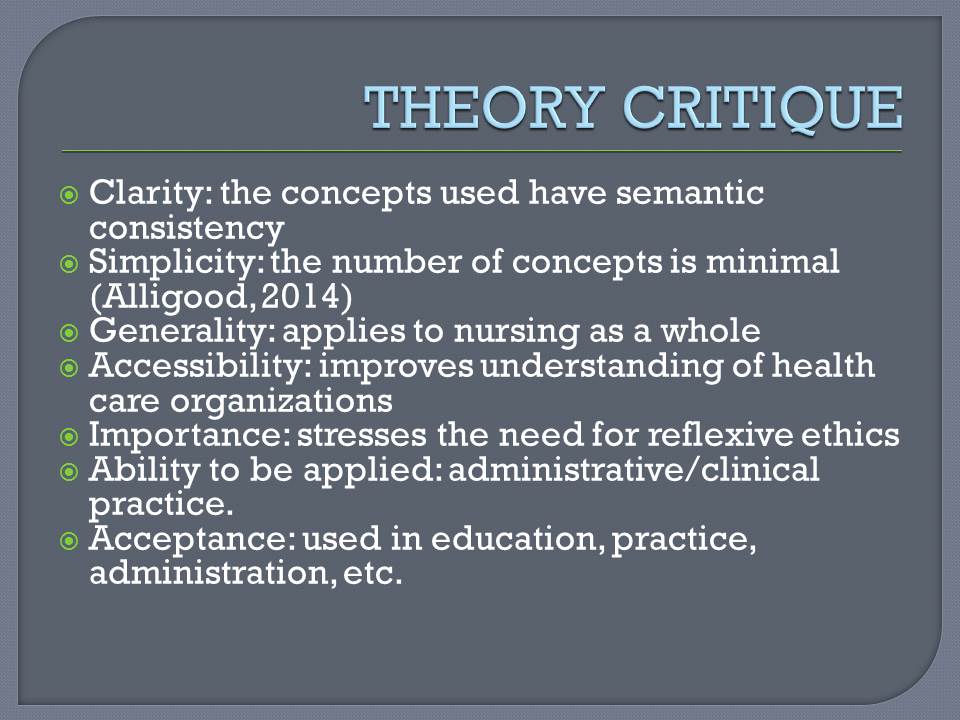
Acceptance: Detailed Overview
- Practice: synthesis of behavior and knowledge;
- Administration: used caring in administrative practice;
- Education: used in the master’s program;
- Research: developed in Caring Inquiry/Complex Caring Dynamics (Alligood, 2014);
- Further development: Relational Caring Questionnaire.
The theory is used in practice efficiently because it synthesizes behaviors and knowledge to create a holistic approach and addresses the administrative and moral issues nurses face. To transform work environment, administrators and staff create ethical caring relationships (Alligood, 2014). The theory is used in master’s programs to explore current issues; students use different factors to analyze the economic structure of healthcare. The theory was used in other research, which eventually led to the emergence of Caring Inquiry and Complex Caring Dynamics approaches that generate data from participants’ relational experiences (Alligood, 2014). The author of the theory used it to create Relational Caring Questionnaire that studies interpersonal resources.
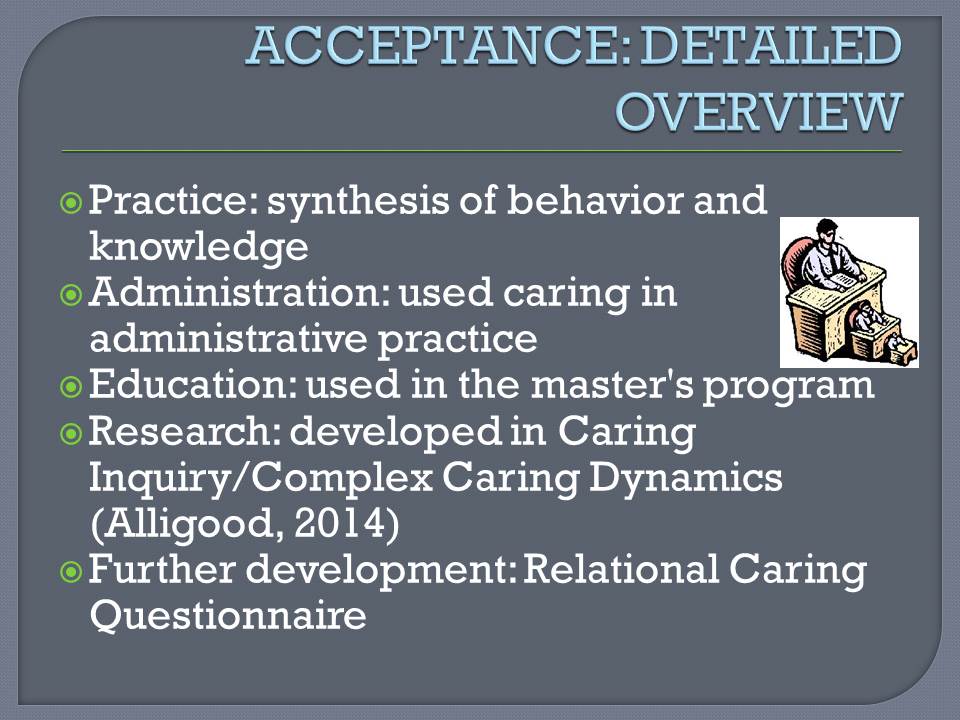
Caring Categories and Clinical Units
- Admission department: social, political, economic, etc;
- Emergency department: technological, educational, political, economic;
- Intensive care unit: technological, ethical;
- Cardiac laboratories: technological, social;
- Oncology: educational, social, spiritual/religious (Ray, 1989);
- Surgery: legal, social, political, technological;
- Recovery room: social, political, technological.
- Medical: political, economic, social;
- Transitional: social, political, economic, technological;
- Rehabilitation: social, educational, political;
- Pediatrics: legal, social, political;
- Obstetrics/gynecology: social, political;
- Delivery room: technological, educational, social.
To efficiently provide services, each of the departments has to use different caring categories or factors. Admission department needs to understand current social issues, as well as existing policies and economic factors to provide services. Emergency department is responsible for technological factors (use of machinery/skills), preventing malpractice (legal), and understanding policies (political). ICUs need to be technically competent and value conflicts (Ray, 1989). Cardiac labs also depend on technical competency and involvement in social dynamics. Oncology provides social involvement, patient education, spiritual or religious care. Surgery department relies on all of the bureaucratic (anti-care) factors that regulate its function, technical competency, and advocacy. Recovery rooms consider technical competency and team interrelationships (Ray, 1989).
Medical department provides social involvement and considers role functioning in teams. Transitional department considers social issues, policies, technical competency, and economic factors in their service. Rehabilitation mostly provides services in social and educational categories, as well as political (e.g. policies on drugs legalization). Pediatrics work in social and legal categories (attention to social involvement and patients’ safety), unit maintenance, and existing policies (e.g. vaccination). Obstetrics/gynecology departments provide social involvement too and rely on role functioning in teams. Although not mentioned by Ray (1989), I also think these departments work in educational category (abortion, contraception, HIV, etc.). Delivery room is responsible for technically competent services, education, and social involvement.
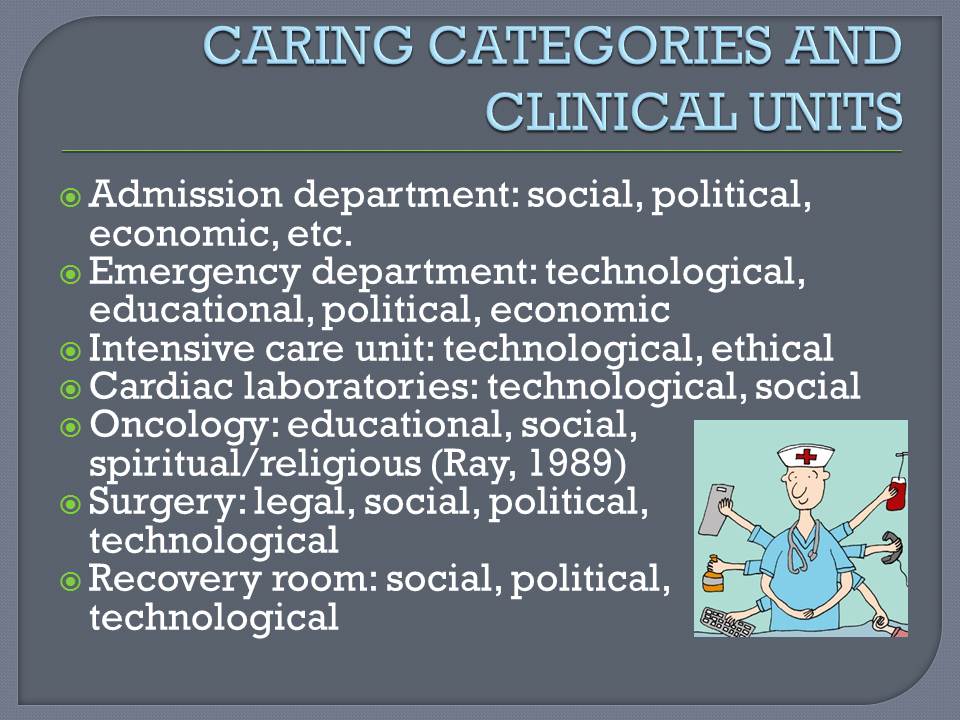
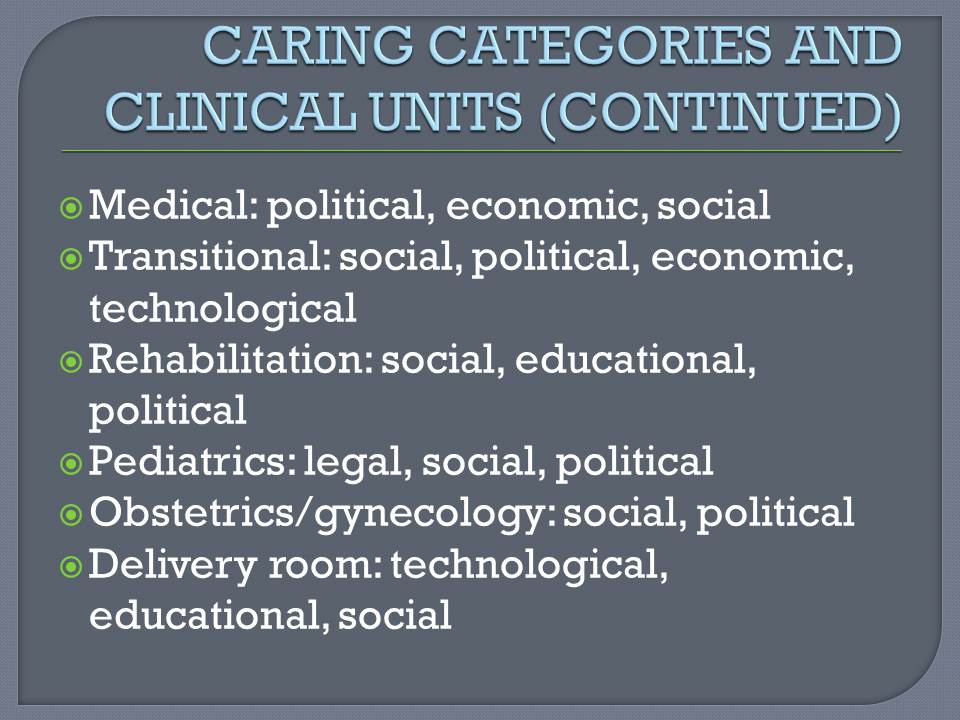
Future Challenges
- Trust and respect not established;
- Loyalty to organization is questioned;
- Nursing practice needs to evolve;
- Organizations will transform to reintroduce ethical dimensions;
- Lack of trust can result in losses and disillusionment;
- Nurses demand transformations to rebuild loyalty;
- Respect, communication, and engagement are the keys.
According to Turkel (2007), trustworthy and respectful relationships between executives and nurses are not established. This results in decreased loyalty to the organization and nurses’ disappointment in their work. Therefore, the nursing practice has to evolve and approached differently be managers and executives so that nurses can rebuild their loyalty towards clinics and organizations. Reintroducing ethical dimensions requires transformation from organizations as well, but the lack of trust results in workforce shortages and nurses’ disillusionment. To rebuild loyalty, nurses demand respect for nursing staff, communication, and engagement in the decision-making process (Turkel, 2007).
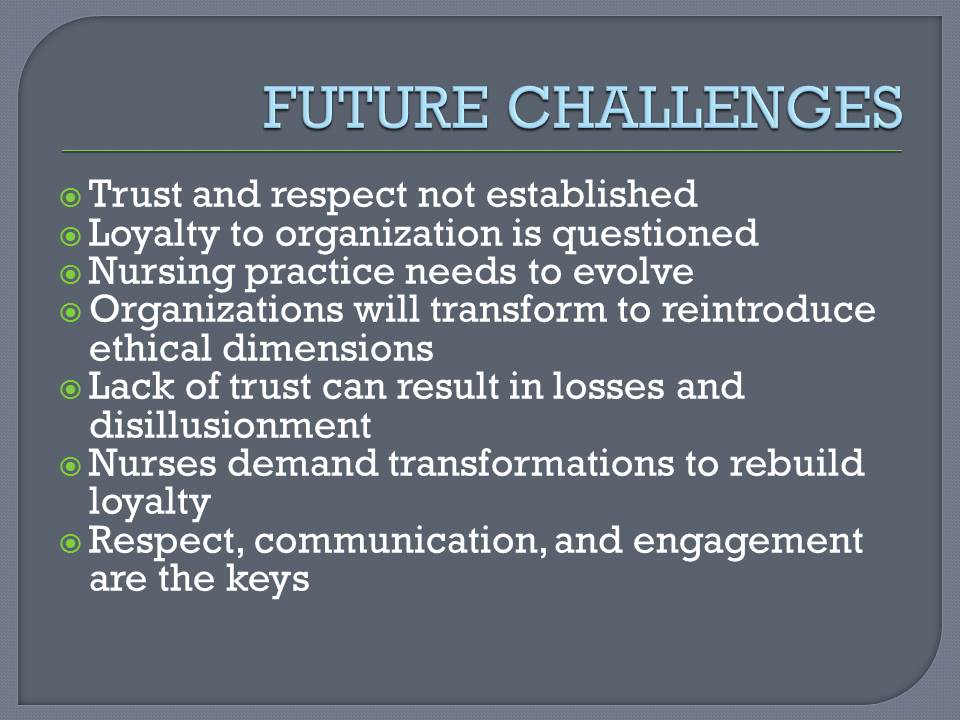
Summary
- The theory combines knowledge and behaviors;
- It is a symbiosis of two approaches;
- Major concepts: caring, educational, physical, political, etc;
- Caring = humanistic, compassion, love, sympathy, understanding;
- Antithesis = economic, political, legal factors (bureaucracy);
- System needs to shift to a broader focus (Ray, 1989);
- Management + caring will benefit healthcare.
The theory is a dialectical synthesis of the thesis of caring (humanistic approach) and the antithesis (economic, political, etc.) (bureaucracy) that stresses the connection of polar opposites to transform the system. If the system will shift to a broader concept, both management and caring combined will provide more efficient services since they will be based on a conflux of these two categories.

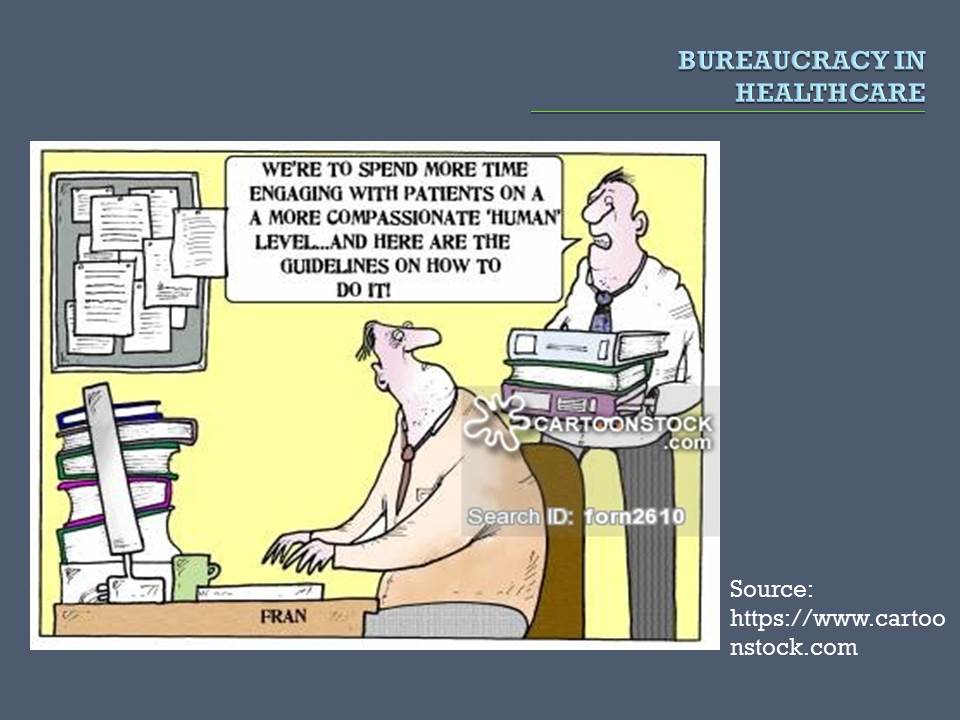
References
Alligood, M. R. (2014). Nursing theorists and their work. New York, NY: Elsevier Health Sciences.
Parker, M. E. (2005). Nursing theories and nursing practice. Philadelphia, PA: FA Davis.
Ray, M. A. (1989). The theory of bureaucratic caring for nursing practice in the organizational culture. Nursing Administration Quarterly, 13(2), 31-42.
Ray, M. A. (2016). Transcultural caring dynamics in nursing and health care. Philadelphia, PA: FA Davis.
Turkel, M. C. (2007). Dr. Marilyn Ray’s theory of bureaucratic caring. International Journal for Human Caring, 11(4), 57-74.
Zaccagnini, M., & White, K. (2015). The doctor of nursing practice essentials. Burlington, MA: Jones & Bartlett Learning.